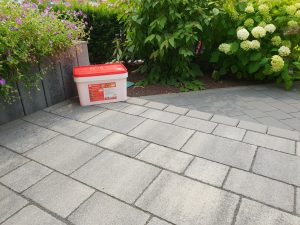Concrete Joints and Expansion Joint Filler: The Bedrock For Construction
The expansion joint filler has many different names. It is also called a crack filler or isolation joint filler. This is what is used to fill the concrete joint in a construction project. A movement joint is a space that is left between two building pieces so that it can absorb the contraction and expansion of different types of building material, and it comes about because of the temperature changes. Expansion is found in some Concrete like slabs, sections of buildings, sidewalks, a driveway and railway tracks. They are also found between sections of buildings, bridges, piping systems, ships, sidewalks, and railway tracks.
Joints fillers have been manufactured to fill the expansion joints in diverse building structures. The products and services are readily available in improvement home depots and a building supply retailers like menards.
Guidelines on Expansion in Concrete
Here are some guidelines to observe when installing expansion joints:
- To get good results of the maximum joint filler spacing, the thickness of the slab should be between 24 to 36 inches.
- The concrete joint spacing should be between 10 and 15 feet.
- If you use joint groove as your contraction joints, the joint must have a minimum depth of a quarter the thickness of the slab.
During construction, two major frost durability challenges arise. There is surface scaling caused by freezing due to the salt in the water and internal cracking caused by the cycle of freezing and thawing. You, therefore, need to use a frost resistant products which can be found at menards.
A good example is grout which is paste or mortar that is used to fill in cracks found between floor tiles or walls. Epoxy is another item that is commonly used for this task. It is a plastic adhesive product prepared from synthetic thermosetting polymers which belong to epoxide groups. They are very effective because they are not permeable to water and are frost resistant.
Joint Filler Material For Expansion Joints
- Asphalt- This is a composition of asphalts, mineral fillers and vegetable fibres. Asphalt is moulded under great pressure and heat separating two asphalt-saturated liners. It is not permeable to water and is permanent. It is also self-sealing and very clear.
- Fibre expansion joint- This is a composition of securely bonded cellular fibres. It is uniformly asphalt-saturated to enhance long life. It is also non-extruding, versatile and resilient.
- Ceramar expansion fillers- This is made from flexible foam. It is a composition of isomeric polymers. This is composed of a unique blend of very small isomeric polymers with a closed-cell structure that is not permeable to water. Ceramar is resilient and it has a 99% recovery quality. It is grey in colour, highly flexible, and light in weight. The filler is also malleable, and this means it can be used in round or circular surfaces.
- Sponge rubber expansion joint- This is manufactured with a density and thickness that is uniform. Its raw products include high standard brown sponge rubber or grey-coloured rubber. You can compress it easily, and it has a recovery quality of 95% of the original thickness. Sponge rubber expansion joint has a density that is above 30 pounds per cubic foot or 480.56 kg per cubic meter.
- Cork expansion joint- This filler is made from chosen, clean, granulated cork bonded phenolic resin. It has a 95% recovery quality of its original thickness when it is compressed to 50%. It has no extrusion and is highly resilient.
- Self-expanding cork expansion joint- It is made under great pressure and heat. The pressure and heat make the joint to expand to 140% of its original thickness after it has been used during construction. This expansion allows the filler to compensate for its shrinkage after some time. The self-expanding properties of this filler are activated by humidity after it has been installed. Self-expanding cork expansion joint should be cut to a proper size on job site. This cork expansion joint is eco-friendly since it is manufactured without using CFC/HCFC gases that are dangerous to the environment.
Outstanding Features of Quality Joint Filler Material
- Resilient – Filler should have a 95% restoration after compression. It is the greatest and most looked-for attribute in expansion fillers.
- Weathering Test – It should be tolerant and should not crumble when a low load is transferred from soaked Concrete.
- Closed cell format – The filler board should be water permeable and resistant. These qualities will make it sturdy and non-deteriorating.
- Bitumen-free –It should be free of bitumen and not stainable.
- Should be suited to EJF applications and standards.
- Chemically Protected – It should be passive to many dilute acids and it should be resistant to oils and hydrocarbons.
- Hygienic – It should be resistant to harmful bacteria and decay.
- Ease of use – It should be user-friendly, unlike the bituminous filler board.
- Heat – It should be compliant to the dictates of the weather and a minimum load transfer.
Removing Old Products from an Expansion Joint
Since expansion joints permit pads to expand during summer and contract during winter, you should never assume that the joints are permanent.

